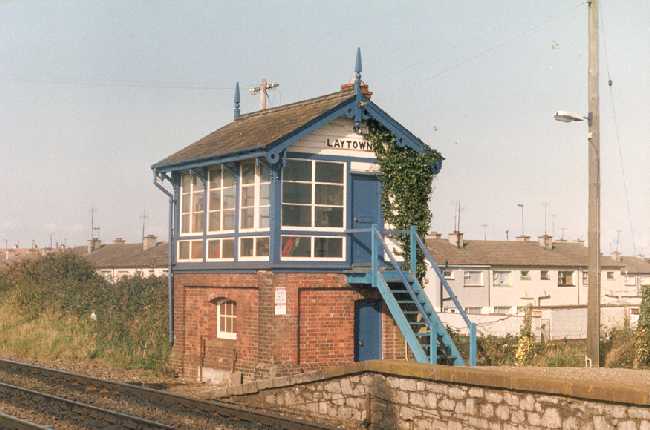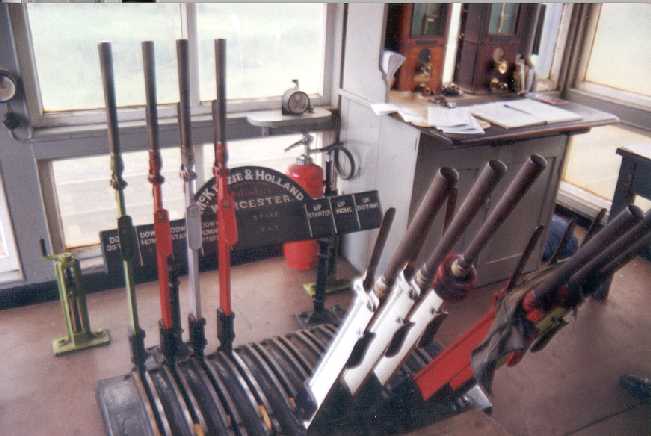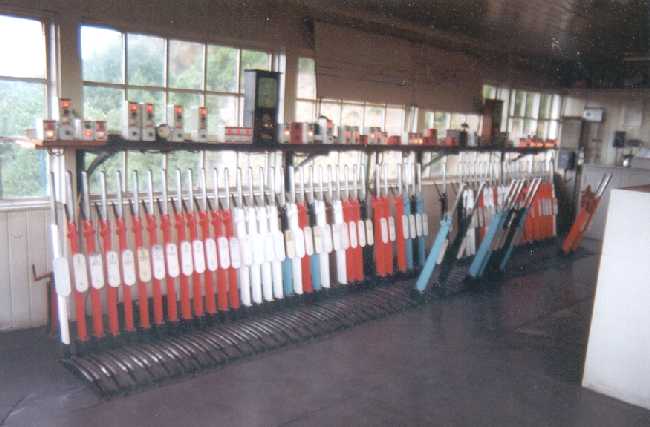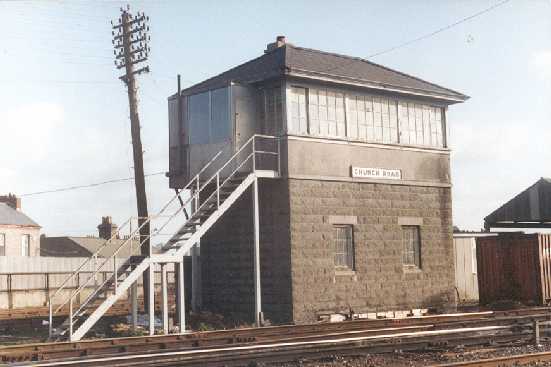
BSGSV
-
Posts
316 -
Joined
-
Last visited
Content Type
Profiles
Forums
Resource Library
Events
Gallery
Blogs
Store
Community Map
Posts posted by BSGSV
-
-
I'm afraid I only have the Departmental numbers.
The Spray Coach was 628A.
One of the 4-wheel dormer coaches was 638A (which was apparently 2771 in a previous life), the other 639A.
I suspect the pink colour may be the result of the application of orange undercoat, which has a tendency to go that colour unless covered.
I would be interested to know the original numbers for the vehicles if anyone has them. The Spray coach appears to be an early CIE 9' 6" wide one, but the number would reveal its history.
-
By the by, the maroon versions of the LMS coaches appear to be only £11.80, against the crimson and cream at £12.90.
Replica do kits of B4's that appear to be a direct fit to Dapol coaches (same Mainline lineage?) Is that right?
And, yes, I would be interested too - in the BSGSV at least! Should have said so sooner.
-
While there are issues with length and end profile I saw the re-introduction of the Stanier 60' coach in combination with overlays as a relatively painless and inexpensive way for modellers who might want to try their hand at kitbashing to add a bit of variety to their roster.
Older stock was common on Dublin inner and outer suburban services up until the commissioning of the DART & Park Royal, Laminate and Craven stock with TL lighting were cascaded off the Intercity routes following the introduction of the MK3s.
A typical outer suburban working to Drogheda or Dundalk would have been made up of 3-4 non TL fitted coaches and a brake standard steam heating van hauled by a B201
John, I assure you I meant no offence regarding the compromises. I think many modellers would find them most acceptable, and, as you say, they would provide an excellent way to introduce the less learned among us to a certain level of kit bashing, as well as providing something novel.
Speaking of kit-bashing, your drawings do show how adept Inchicore got at the 12 inches to one foot variety. Nice to see the BSGSV!
I have happy memories of the last of the CIE design stock on Dublin outer-suburbans, in tandem with Park Royals and BR and Dutch gen vans, hauled by A's, C's and GM's, so much so that my "modelling" these days mainly consists of working on preserved vehicles.
-
The original premise is very thoughtful and clever.
LMS Period 111 carriages are 60' long and 9' 3" wide.
Most early CIE stock is 61' 6" long and 9' 6" wide, and the roof profile looks different, so clearly there are some dimensional compromises to be accepted.
I would think that CIE 10' 2" wide stock is going to be too "fat" to represent.
The LMS underframe isn't going to pass for a GSR one, given the GSR remained faithful to round rod and turnbuckle trussing, but the bogies aren't a million miles from GSR/early CIE ones.
The LMS underframe is also not going to pass muster as a Bulleid triangulated CIE underframe either, and I've never felt the BR Commonwelath looks much like a CIE one.
While all this may appear to narrow the field, as John has pointed out, quite a bit of stock was built that could be represented, if one accepts a 61' 6" x 9' 6" envelope with "normal" underframe and GSR type bogies.
All below are 61' 6" x 9' 6" with "normal" underframes and GSR type bogies unless stated.
Compo
2124 - 2129 of 1951, 60' x 9' 6"
2130 - 2136, 2139, 2144, 2152, 2155 of 1952/4
Third
1339 - 1355 of 1951/2 Side corridor
1356 - 1371 of 1953 open
Brake Third
1904 - 1908 of 1953 of which 1906/7 became driving trailers for AEC railcars for a time
Diners
2405 - 2418 of 1953/4 buffet, fitted with Hoffman roller bearing axleboxes.
Later fitted (late 1960's) with B4 bogies (without dampers like the Cravens).
2407 later became a kitchen car (1969), 2412 and 2416 later cafeteria cars.
Conversions were 2126/7/35 to radio studio coaches, later numbered (from 1966) RS22/3/4
The remaining compos were downgraded to all-third class in 1972. In 1974 these were converted to vans in the 257x and 258x series, as were five of the 1339 to 55 series thirds (258x and 259x).
The remainder of that batch of thirds became BSGSV's in 1977/8, 3201 - 12.
Some of the compo vans seem to have become BGSV's 3213-8 at the same time. Some compo/vans also became BSGSV's 3219 - 3224 in 1980.
Arrival of DART and Mk.3's meant that withdrawals were rapid from 1984 onwards.
As I said at the start, a very well thought out idea.
-
Does anyone if this is a ex mk3?? Seen in whitehead, June/July 2013
Not an ex-Mk.3, as it is still a Mk.3, if you follow me? RPSI bought a Mk.3 sleeper, 10651, from the UK for use as accommodation for volunteers at Whitehead. It is due to be refurbished as part of the GROW works this year, I believe.
The Mk.3's being hauled from North Wall to Inchicore are some of the so-called VSOE coaches, with 6105 acting as brake van as there's nothing else. Should be at least one more run to/from North Wall to collect the rest, at some point.
As Killucan has previously stated in this thread, 6105/6402 are intended for preservation. Not by ITG though.
-
You're probably already aware of it, but just in case, British Mk.4's (which are available rtr) and Irish Mk.4's (which aren't) were built by different companies and simply repainting a British one won't give you an accurate representation of an Irish one.
-
-
and no.'s 124 & 126 at Inchicore are later. The later photo is interesting, the note says the photo was taken in 1961 shortly after delivery- it's a b&w shot but I reckon there is no yellow on these two, even no yellow wasp stripes.murrayec
I can see the stripes on the cowcatchers on both locos in that photo. Given the yellow numbers look similar to the grey body colour (but the near, three stanchion handrail does not), I would suspect the yellow is present elsewhere too and has just blended in too well.
-
There's no grille (under worksplate) at the front of the bonnet in the older G's. Also that raised area on top of the bonnet doesn't seem to feature?
The inspection door on top of the bonnet is a feature of both types of G.
-
An original A or C class one would be very nice, not to mention one for a Sulzer.... (should any of the aforementioned exist, which I'm sure they must do in some form?)
Not seen one for either Sulzer. A and C classes had three thick manuals each. Part 2 of each was mostly about the engine, and I've not seen a C class one of those. Part 3 of each also seems relatively less common, not that Part 1's appear to be all that common. Those preserving them tend to need the manuals to use, rather than being collectors' items.
-
where the feck did you get this Fran?....or should i ask[ATTACH=CONFIG]12118[/ATTACH]
141 class versions seem quite common. The JL18 (181) class ones rather less so.
-
They would have been originally painted according to pattern, but the paint would have worn off in service.
A was red
B was blue
C was green
http://freespace.virgin.net/david.holden4/index.htm (go to 'token configurations' and scroll down)
Large ETS also had a "D" pattern, which was yellow.
-
Apart from the Newmarket and Banagher goods for a short time only, the G601 trio were only used for shunting, and very little at that.
And Castleisland!
601 v 611
601 is shorter in length, 20' 8" versus 21' 2",
cab windows front and back different,
different cab door handrails,
cab is constructed on 601 in two halves, with beading horizontally covering the join just under the cab windows,
engine exhaust cowl on front of cab is flat and square on 601 but somewhat cone shaped on 611,
no marker lights on 601 front and rear,
no vacuum pipes front and rear on 601,
as no vacuum system on 601, the isolation valve underneath the left hand cab attached to the framing on the 611 type is missing,
front footsteps are different on 601, also 611 type has a cut-out in the running plate at the front steps, but 601 does not,
front side bonnet doors are solid on 601, but have a grill on 611.
-
I think some of you have been deepthroated....
As one who has...I agree!!! Nicely done though.
-
Is that 141 coupled to the coach in use as a shunter?
Contrary to Railer's comment, no it isn't.
There hasn't been a working 141 class on IE for about two and a half years, 171 being the last.
That Mk.3 picture is quite recent. Note the "OrientExpress" branding. I don't think that's for 29k Railcars!
-
but to be clear lads, is it just 6105 and 6402 that are to be the only survivors of the entire mk 3 fleet?
Along with others, I have heard rumours about a luxury train operator setting up shop in Ireland and a preservation attempt, both of which would involve Mk.3's - if true. Apart from the two Mk.3 Internationals (one at the hotel, the other at the garden centre), there is also 7161 at Inchicore (one of the "Executive" coaches) which, given it wasn't cut with the rest last year, suggests it has some possibility of a future with IE. As to others, I think we will have to wait until the scrapper is finished working at Waterford, Dundalk and North Wall and see what - if any - Mk.3's are still extant. That doesn't mean that if there are any survivors, that they're safe either. It may be just a temporary stay of execution until someone figures out whether whatever scheme is afoot will survive long term. Given the amount of carriages involved there will be quite a wait.
-
thanks for that BSGSV. pity about the pic - would love to see it. what logos were on the side of her can you recall?
ir if I remember correctly, but I wouldn't swear to it.
-
was the livery on the dvt seriously considered at any stage?did it ever go as far as spraying a full car?
124 was painted in that livery. Briefly. I've only ever seen the one photo of it in traffic, not mine unfortunately.
-
Possibly the only GNR(I) example left, as its companion, Bundoran Junction West is now rotted away I believe. However, the cabin design is by the contractor, the Railway Signal Company, and there are still quite a few of those about, particularly in Britain.
-
-
There hasn't been a working 141 class on IE for well over a year. 171 was the last one used in Inchicore, but not now used. Google maps satellite view was updated of late and shows six 141's and a lot of stored 201's as it was in the summer of this year. The photos above are about six and a half years old now.
-
Unfortunately I took those in 2004, so lord knows what condition it's in now. Incidentally, is this a quiz or just a general chat?! Richie.
If it's a quiz, it's your own fault for not naming the location in the first place!
I thought Bruree was bad when I saw it in the 1990's, but I'd be surprised if anything is standing now, by the looks of your 2004 photo.
Bruree was (is?) distinctive, having all the appearance of the 1920's GSWR Cabin design, but with a hipped roof rather than gabled.
Waterford Central is more typical of the GSWR design, but only since 1923 or so, when it was rebuilt after Civil War damage. When it was new c1906 it had a gabled roof. Think all-timber cabin in the style of Roscrea, only bigger.
Waterford Central interior from the mid-1990's. The GSWR Tappet frame is probably a 1923 replacement.
-
 2
2
-
-
Glenderg, is that what remains of Bruree these days?
In passing, Navan's windows were replaced (in the 1980's?) but were originally the usual design. Bachmann's "Donabate" has windows that don't match anything much in Ireland, and the height is rather excessive for most GNR(I) cabins too.
-
.png.c363cdf5c3fb7955cd92a55eb6dbbae0.png)




Craven Coaches 1145 & 1146
in Questions & Answers
Posted
Took me a long time to figure out how CIE had created five super standards out of four standards, until I tracked down the dates the super standards were current. I still have no real idea why CIE didn't re-use the number 1148 and can only conclude it was an oversight.